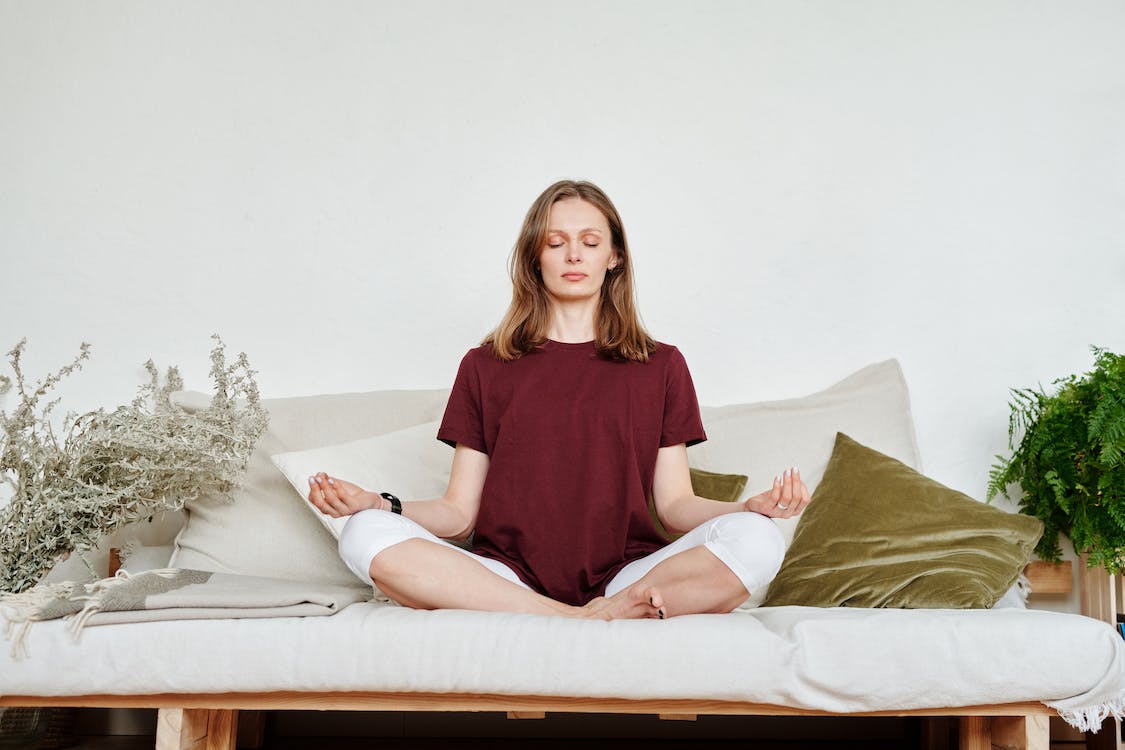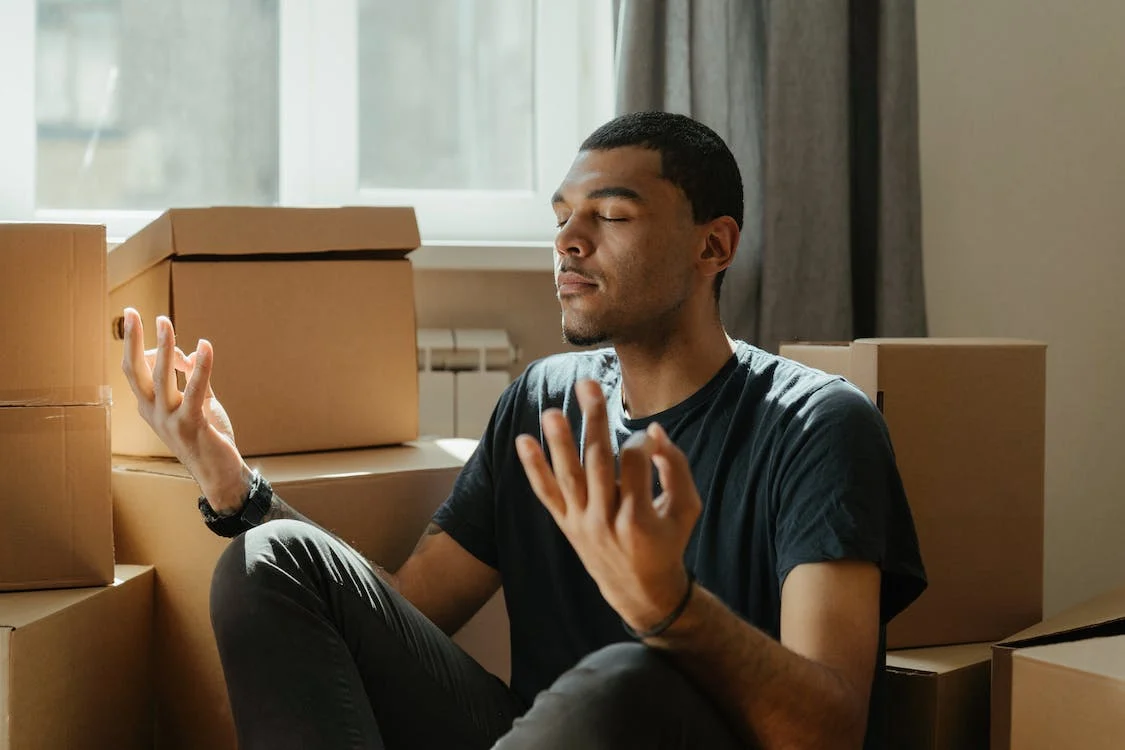Introduction
It’s a very hectic week. From juggling work or studies to dealing with family commitments, and the never-ending list of errands you need to do in between, it seems as if you’re always presented with problems even before you can sit down and rest. In this fast-paced world, stress and anxiety may often come knocking on our doorstep to disturb our peace. While it is normal to face problems and feel this way as humans, too much can be dangerous to our well-being. You may experience a rollercoaster of emotions, a fast heartbeat, tense muscles, and that twisting feeling inside your stomach – all these are just a few of the signs that your body is responding to stress and anxiety.
But do not worry, you are not alone in facing this whirlwind. We are here to hand you a compass to guide you in getting through the maze of stress and anxiety by offering a couple of various techniques. Some strategies may seem challenging in the first few attempts, but with practice, they may lead you to a path of mental peace.
Embrace Mindfulness and Live in the Present
Did you know that most of the time, our stress and anxiety stem from dwelling in the past or worrying about the future? When our mind is constantly worrying about things that are beyond our control, it’s a sign that we must pull ourselves back to the present so we can feel more relaxed. Practicing mindfulness meditation lets you do just that by doing activities that allow you to be strongly aware of what you’re sensing at the moment without judging or interpreting it too much. Several mindfulness techniques that you can follow are the following:
1. 5-4-3-2-1 or 5 senses Technique – When you are overwhelmed with anxiety, you can try this strategy which practices mindfulness by using all of our 5 senses. The key is to not overthink, and just take note of what your senses tell you. [1]
- First, look around the room and name 5 things you see around you. They can be objects or living things like your cat or an insect.
- Second, name 4 things you can touch. Be it things around you or a part of you like your ear. Third, name 3 things that you can hear. These can be sounds you hear around you or internal sounds like your own breathing.
- Fourth, name two things you can smell. It can be the fragrance of your hair or a book.
- Lastly, name one thing you can taste inside your mouth, if it doesn’t taste anything that’s still okay.
2. Body Scan Meditation – This technique helps you to focus on yourself by releasing the tension being held in your whole body. First, you must lie on your back, extend your legs, and put your arms to the side. Breathe in and start clenching the muscles on your face and eyes shut for 5 seconds and release gradually for 10 seconds. This applies to the rest of your body going down, until your toes. [2] [3]
3. Sitting Meditation – Sit in a comfortable position with your legs crossed and your hands on your lap. Focus on breathing through your nose, and if any sensations or thoughts interrupt you in the process, just acknowledge the experience and shift your focus back to your breathing. [3]
4. Walking Meditation – You may need to find a quiet place to walk around that’s about 10 to 20 feet in length. Walk slowly and be aware of all the sensations you’re feeling as you move forward and maintain your balance. Once you reach the end of the path, turn around to continue walking and repeat the process as much as you would like until you feel calm and relaxed. [3]
Take it one breath at a time
Hyperventilation can be one of the physical symptoms of anxiety where your breathing quickens and too much oxygen enters your body, which reduces the carbon dioxide in your blood needed to regulate your response to anxiety and panic. [2] No wonder that breathing techniques are always advised when you are feeling stressed and anxious because of their direct impact on health. Deep and intentional breathing is not just about inhaling and exhaling air, but you should also focus on releasing tension and relaxing your senses to achieve a calm mental and physical state. Here are two simple breathing techniques that you can follow:
1. 4-7-8 Breathing Technique – Inhale through your nose for 4 seconds, hold for 7, and exhale through your mouth for 8 seconds. Do this slowly. This breathing technique can help you relax and even make you fall asleep. [1] [2]
2. Short inhale and long exhale – You must only take a big, deep breath for 4 seconds through your nose, and exhale longer for about 6 seconds. [2]
Practice Self Love with Self Care Rituals
Spending time to take care and love yourself with calming and pleasurable activities should not be a luxury but a necessity. Remember that practicing self-love and doing self-care rituals or activities is not a selfish indulgence. After all, we also deserve to live our lives more than just surviving it day by day. There are many activities you can do and it’s up to you to decide which ones can help you relax more or are suitable for you. But here are some suggestions that can help you brainstorm and get started. Feel free to add to the list:
- Yoga
- Meditation
- Getting a massage
- Creative activities (like painting, crafts, crochet-making)
- Reading a book
- Taking a bubble bath
- Watching comfort films
- Laugh by watching or listening to something funny
Identify and Your Stressors
Knowing what circumstances or factors set off your stress alarm can be helpful because it lets you face the stress head-on by allowing yourself to plan and use the right strategies or techniques to stop stress in its tracks before it takes over you. You can keep a thought diary and write it down whenever you feel anxious or stressed and identify what you think may have caused these feelings. Listing these things will also help you identify what stressors are outside your control so you can focus on those that are within your control. For example, in social interactions that may trigger your anxiety, you can focus on how you will approach them or whether or not to interact with them instead of focusing on their judgments or thoughts which we have no control over.
Build a Healthy Body for A Healthy Mind
Since our mind is also a part of our body, we must take care of it with physical exercise. Making it a habit to stretch your muscles and strengthen your bones regularly by exercising cannot only help you stay fit but can also improve your sleep and mood which articles have explained leads to better stress management. This is because, during physical activity, our body releases various hormones like endorphins and endocannabinoids that can assist in blocking pain, improving sleep, and lightening up one’s mood. [4] You can do various exercises like running, swimming, sports, dancing, aerobics, or heading to the gym. If you don’t have time for a structured exercise program you can just simply walk or ride a bike to the store, or wash your car, to name a few. Tag along an exercise buddy so you can enjoy the experience better!
In building a healthy body, proper nutrition or diet is also important to make sure you’re fueling yourself with food that will keep you functioning well. Maintaining a healthy diet can also lessen the effects of stress and anxiety, build up the immune system, and even lower blood pressure. To stay healthy, you must have a balanced diet composed of carbohydrates, lean proteins, and fatty acids found in eggs, fish, meat, and nuts. [4] What you should consume less are alcohol and other stimulants such as caffeine found in coffee and tea, nicotine which is found in cigarettes and vape pens, and of course, steer away from using illegal drugs. [2] [4]
Seek and Strengthen Connections with People
No man is an island, and no one truly wants to deal with and fight against stress and anxiety all alone. Because of this, it’s important to seek and strengthen connections with people as they can offer you an important support system that will constantly remind you that you are enough and not alone in this battle. As you share your worries and thoughts with your trusted family or friends, this helps lighten up the load and also offers us refreshing perspectives. Finding a sense of community through work and other group activities such as volunteering and sports can also be a good idea.
Conclusion
Managing stress and anxiety is no easy task so don’t fret and be patient with yourself when some of the strategies don’t work immediately for you. Everything takes time. Also, take note that these are not meant to replace help from a professional when needed. So if you feel like you need guidance from an expert, feel free to do so. But rest assured that continuing your efforts in embracing mindfulness, taking deep breaths, caring for your body, and maintaining relationships, will pay off in the long run and help you become a stronger and more resilient person. You got this!
References
[1] Marie, S. (2021, June 23). How to reduce anxiety right here, right now. Psych Central. https://psychcentral.com/anxiety/how-to-reduce-anxiety-quickly#how-to-calm-down-now
[2] How to manage your anxiety and stress. (n.d.). Anxiety | ReachOut Australia. https://au.reachout.com/articles/how-to-manage-your-anxiety-and-stress
[3] Mindfulness exercises. (2022, October 11). Mayo Clinic. https://www.mayoclinic.org/healthy-lifestyle/consumer-health/in-depth/mindfulness-exercises/art-20046356
[4] Ragland, L. (1999, December 31). Ways to manage stress. WebMD. https://www.webmd.com/balance/stress-management/stress-management
[5] Tips and strategies to manage Anxiety and stress | Anxiety and Depression Association of America, ADAA. (n.d.). https://adaa.org/tips
[6] Nhs Uk. (2023, July 25). 10 stress busters. nhs.uk. https://www.nhs.uk/mental-health/self-help/guides-tools-and-activities/tips-to-reduce-stress/








